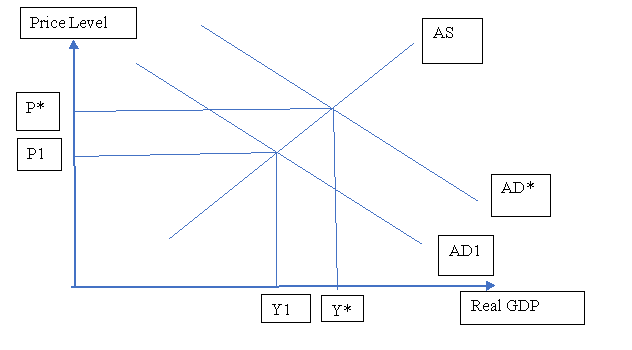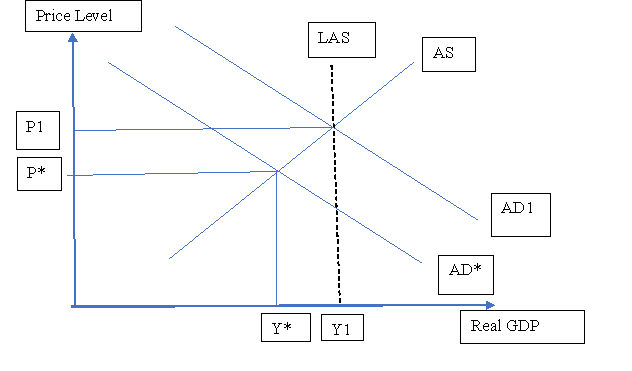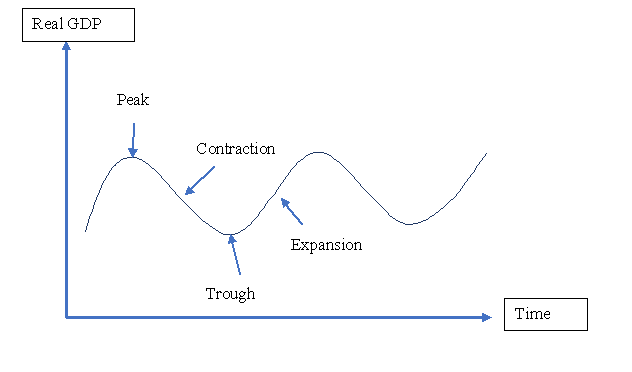Economics Assignment: Case Study Analysis on The Recession of 2008-2009
Question
Task:
The recession of 2008-2009
In 2008 and 2009, the US economy and many others around the world experienced a financial crisis and a severe downturn in economic activity. In many ways, it was the worst macroeconomic event in more than half a century.
The story of this downturn begins a few years earlier with a substantial boon in the housing market. The boom was, in part, fuelled by low interest rates. In the aftermath of the recession of 2001, the Federal Reserve lowered interest rates to historically low levels. Low interest rates helped the economy recover, but by making it less expensive to get a mortgage and buy a home, they also contributed to a rise in housing prices.
In addition to low interest rates, various developments in the mortgage market made it easier for subprime borrowers – those borrowers with a higher risk of default based on their income and credit history – to get loans to buy homes. One development was securitization, the process by which a financial institution (specifically, a mortgage originator) makes loans and then (with the help of an investment bank) bundles them together into financial instruments called mortgage-backed securities. These mortgage-backed securities were then sold to other institutions (such as banks and insurance companies), which may not have fully appreciated the risks in these securities. Some economists blame inadequate regulation for these high-risk loans. Others blame misguided government policy: some policies encouraged this high-risk lending to make the goal of home-ownership more attainable for low-income families.
Together, these many forces drove up housing demand and housing prices. From 1995 to 2006, average housing prices in the United States more than doubled.
The high price of housing, however, proved unsustainable. From 2006 to 2009, housing prices nation-wide fell about 30 percent. Such price fluctuations should not necessarily be a problem in a market economy. After all, price movements are how markets equilibrate supply and demand. In this case, however, the price decline had two related repercussions that caused a sizable fall in aggregate demand.
The first repercussion was a substantial rise in mortgage defaults and home foreclosures. During the housing boom, many home owners had bought their homes with mostly borrowed money and minimal down payments. When housing prices declined, these home owners were underwater (they owed more on their mortgages than their homes were worth). Many of these homeowners stopped paying their loans. The banks servicing the mortgages responded to these defaults by taking the houses away in foreclosure procedures and then selling them off. The banks’ goal was to recoup whatever they could from the bad loans. As you might have expected from your study of supply and demand the increase in the number of homes for sale exacerbated the downward spiral of house prices. As house prices fell, spending on the construction of housing also collapsed. A second repercussion was that the various financial institutions that owned mortgage backed securities suffered huge losses. In essence, by borrowing large sums to buy high-risk mortgages, these companies had bet that house prices would keep rising: when this bet turned bad, they found themselves at or near the point of bankruptcy. Because of these large losses, many financial institutions did not have funds to loan out, and the ability of the financial system to channel resources to those who could best use them was impaired. Even creditworthy customers found themselves unable to borrow to finance investment spending. As a result of all these events, the economy experienced a large contradictory shift in aggregate demand. Real GDP and employment in the US both fell sharply. Real GDP declined by almost 4 percent between the fourth quarters of 2007 and second quarter of 2009. The rate of unemployment rose from 4.4% in May 2007 to 10.1% in October 2009. The problems were not confined just to the United States. The complex integration of the global financial system meant that banks in other countries were also affected and GDP in many developed countries fell and unemployment rose.
As the crisis unfolded, the US and other governments responded in a variety of ways. Three policy actions – all aimed in part at returning aggregate demand to its previous levels – are most noteworthy. First, the Fed cut its target for the federal funds rate from 5.25% in September 2007 to about zero in December 2008. At one stage six leading nations including the United Arab Emirates announced a collective cut in interest rates to highlight the seriousness of the economic situation worlwide and the importance of taking speedy action. The Federal Reserve and some other central banks also started buying mortgage-backed securities and other private loans in open-market operations. By purchasing these instruments from the banking system, central banks provided commercial banks with additional funds in the hope that the banks would make loans more readily available. Second, in an even more unusual move in October 2008, Congress appropriated $700 billion for the Treasury to use to rescue the financial system. Similar “bail-outs” were announced in other countries too. The goal was to stem the financial crisis on international markets and make loans easier to obtain. Much of these funds were used for equity injections into banks. That is, the Treasury put funds into the banking system, which the banks could use to make loans: in exchange for these funds, the US government and other governments became a part owner of these banks, at least temporarily.
Finally, when Barack Obama became president in January 2009, his first major initiative was a large increase in government spending. After a relatively brief congressional debate over the form of the legislation, the new president signed a $787 billion stimulus bill on February 17, 2009. Such fiscal stimulus packages were also announced in many other leading economies and those of emerging nations such as China. The recovery from this recession officially began in June 2009. But it was, by historical standards, only a meager recovery. From 2010 through 2012, real GDP growth averaged 2.1% per year, below the average rate of growth of about 3%. Unemployment fell from its peak but remained high: in April 2013, it was 7.5%, about 3 percentage points higher than it was before the downturn began.
Economics Assignment Instructions: Your task is to explain the above case study in detail and make questions from that case study and make all the possible diagrams like AD and AS, Long Run Equilibrium, Contraction and many more diagrams which are from the case study.
Answer
The given case study considered in this economics assignment is based on the Global Financial Crisis of 2008-2009 when the world economy experienced a massive recession. The main reason foroccurring such a severe economic downturn is discussed further with the help of proper economic concepts and diagrams. The extensive advantage in the housing market due to a low rate of interest led the housing prices to go up. Furthermore, various kinds of developments such as securitization in the mortgage market also led the subprime borrowers to get loans for purchasing homes. However, the risk and possibility of default were higher for these types of borrowers as they had comparatively low income and credit history. Hence, as per many economists, the inadequate regulation and misguided policy of the government influenced many low-income groups people to afford the price of a house and to demand it. Consequently, increasing demand for houses led the housing prices to increase as the US government could not provide adequate house supply for reducing the gap between demand for and supply of houses in the market. This in turn made the housing market unstable and had to related repercussions in the economy for which the aggregate demand for the economy declined considerably. These two repercussions were a substantial increase in mortgage defaults as well as home foreclosures and huge losses suffered by different financial institutions.
From the above case study the following questions can be drawn:
Q1. How did the Global Financial Crisis occur during 2008-09 in the USA?
Q2. How do the AD and AS curves influence a country’s economy?
Q3. How does a recession affect an economy?
Some possible diagrams are provided in the following section:
The entire activity led the real GDP and employment of the US to decline significantly, which indicates a sharp fall in aggregate demand (AD) for the economy while aggregate supply (AS) remained at its previous level (Lisi 2018). Thus, the situation is described in the following diagram:

Figure 1: AD-AS Curve
From figure 1, it is seen that AD curve shifts from AD* to AD1, indicating that the real GDP of the US declined from Y* to Y1 at the time of crisis. Moreover, the price level of the economy also declined from P* to P1 accordingly. As mentioned in the case study, GDP declined by 4% between the fourth quarter of 2007 andthesecond quarter of 2009 while unemployment also increased accordingly.
To recover the economic condition from the recessionary period, the US government along with governments of other countries considered various policy actions for increasing the aggregate demand of the economy to increase further. The economy could achieve a long-term equilibrium condition if its AD curve equated with short-run and long-run (LAS) AS curve. The situation of long-run equilibrium implies a stable condition where the economy is operating at the full employment level and producing output at completely adjusted prices. The following figure represents a long-run equilibrium condition, which the US and other developed countries tried to achieve after facing the adverse economic conditions (Riccetti, Russo and Gallegati 2017). The following diagram represents a long-term equilibrium condition that the US economy tried to achieve by increasing government expenditure after June 2009.

Figure 2: Long-run equilibrium
The above figure represents a long-run equilibrium condition that the US and other countries targeted to reach. Here, the government expenditure is increased from Y* to Y1 in such a way that it equates the short-run and long-run supply curves at the same point. Here, Y1 is the full-employment output level and P1 is the stable price level of the economy. This economic condition will not experience any recession or depression further.
US and other developed countries faced a recession after the financial crisis though it is expected that the economy can achieve growth after reaching trough. After the financial crisis of 2008-09, developed economies experienced a contraction when their economic growth and employment reduces and forces the entire economy to decline further. In this context, it is essential to mention that a business cycle represents 4 phases of the economy where decreases followed by increases in production process take place accordingly (Jordà, Schularick and Taylor 2017). The business cycle occurs due to the demand and supply forces that represent the movement of the GDP.

Figure 3: Contraction in business-cycle
The above figure represents the condition, where the developed economies shifted from peak to contraction due to the crisis. ?
References:
Jordà, Ò.,Schularick, M. and Taylor, A.M., 2017. Macrofinancial history and the new business cycle facts. NBER macroeconomics annual, 31(1), pp.213-263.
Lisi, G., 2018. The AD-AS Model with the Shadow Economy.Economics assignment Journal for Economic Educators, 18(1), pp.8-16.
Riccetti, L., Russo, A. and Gallegati, M., 2017.AD-AS Representation of Macroeconomic Emergent Properties. In Introduction to Agent-Based Economics (pp. 65-86). Academic Press.












